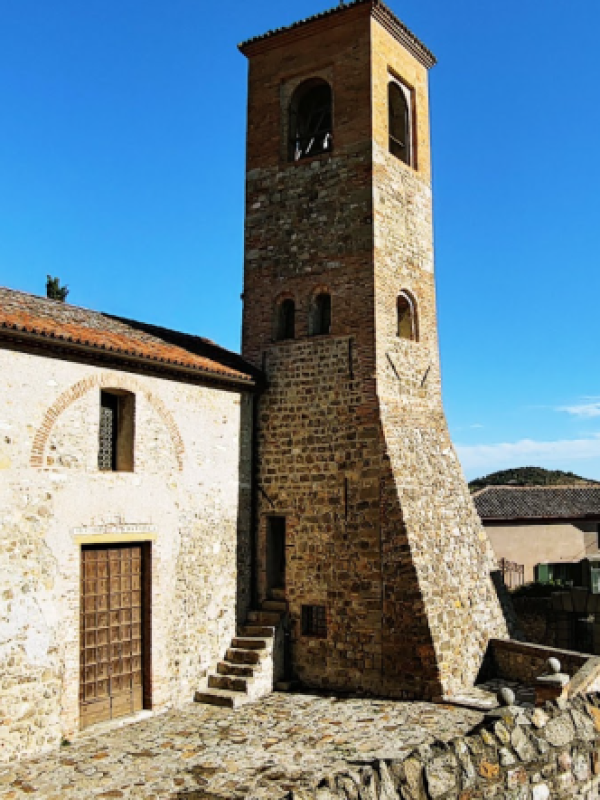Today the oratory is a multifunctional space that hosts cultural events, exhibitions and civil weddings, keeping alive its vocation as a meeting place for the community. A multimedia path allows visitors to learn more about the history of the village and the poet, enriching the visiting experience.
A jewel of art between faith and culture
The building, with a single nave with a gabled roof and exposed beams, preserves a valuable artistic heritage. The polyptych from 1370-1370, attributed to Jacobello di Bonomo, depicts St. Augustine blessing, flanked by six saints and twelve figures in the upper register. It is one of the oldest and most significant works in the village, now kept in a shrine for its preservation. Since St. Augustine was Petrarch's "favorite" saint and since the poet was in the borough at the time the work was executed, it is said that he was the one who suggested to the painter to put him in the center.
The 17th-century carved wooden high altar houses the altarpiece
"The Trinity and Saints Joseph, Francis, Lucy and Margaret" by
Palma the Younger (
1626), made in the painter's last years of activity, with obvious Titian and Mannerist influences.
The altar mensa is embellished with a rare leather antependium with floral decorations and the figure of Christ the Redeemer.
Curiosity: This material is very original, usually, in fact, the antependium was a cloth drape that covered the front of the altar mensa. It could also be made of satin, damask or brocade, even decorated with embroidery or painted parts, but it is then made of a less delicate and perishable material and therefore more durable.
Other fourteenth-century frescoes, attributed to the Giotto school, testify to the great artistic season experienced by the Euganean Hills under the Signoria dei Carraresi. To the left of the arch of the apse the figure of St. Christopher, patron saint of travelers, can be recognized, and he is still the protagonist of a striking 17th-century statue in painted stone with metal inserts.
On the back wall stands out the large painting by
Giovanni Battista Pellizzari (
1620),
"The handover of the insignia between Antonio and Daniele degli Oddi", which documents the handover between two vicars of Arquà, emphasizing the administrative role of this place in past centuries.
A stoup composed of a pre-Roman urn and a Renaissance trachyte column, assembled around the fourteenth to fifteenth centuries, is also noteworthy.
Still today, the Oratory of the Holy Trinity is a landmark for the community of Arquà Petrarca and a fascinating place for visitors, where art, history and spirituality intertwine in a unique atmosphere in the heart of the Euganean Hills.

